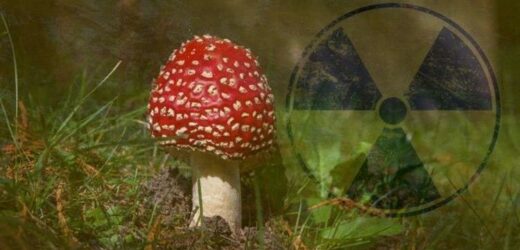Piers Morgan jokes about 'reason' Ben Fogle went to Chernobyl
We use your sign-up to provide content in ways you’ve consented to and to improve our understanding of you. This may include adverts from us and 3rd parties based on our understanding. You can unsubscribe at any time. More info
Some 35 years after the RBMK-1000 reactor exploded churning out vast quantities of radioactive material across the region, some types of fungus in German forests have been shown to contain increased amounts of radioactive Caesium.
The report conducted by the BfS for Salzgitter paid particular attention to the forests in the south of Germany.
“The radioactive caesium in the mushrooms still comes from the reactor accident in Chernobyl 35 years ago,” said BfS President Inge Paulini.
She went on to say: “Unlike agricultural soils, forest soils have it in a form that plants and fungi can absorb – and some types of fungi are particularly good at it.”
As to whether mushrooms are edible, the law defines that certain conditions apply.


In Germany, it is not permitted to market food with a radioceasium level of more than 600 Becquerel per kilogram. This limit however does not apply for private use.
In recent years however, the BfS has found levels of caesium reaching 1,000 Becquerel per kilo of fresh mushrooms spread across various species of fungi, some of which are edible and popular with consumers.
The report states that if wild game and mushrooms are eaten in usual amounts, the additional radiation exposure is comparatively low.
Those who wish to lower their personal exposure should not excessively eat wild game, self-hunted or mushrooms self-picked in the most affected areas of Germany.

With wild game also being in abundance in some forests of Southern Germany, the report also addresses the issue.
Wild Boar, depending on the area affected, has been reported to demonstrate levels exceeding more than 10 fold the threshold of 600 Becquerel’s per kilogram.
Peak values measured in the finding show that some wild boars had caesium levels of up to 17,000 Becquerel’s per kilo of fresh meat.
However, the problem will start to improve over time.
DON’T MISS:
EU turning blind eye to human rights abuses [REVEAL]
French Ambassador to Ireland praises Britain ferry bypass [REPORT]
China warns war could be ‘triggered at any time’ [OPINION]

Radioceasium migrates very slowly into deeper layers of forest soils. As a result of this migration and of the radioactive decay, the activity of concentrations in mushrooms and wild game will gradually decrease in the coming years.
The disaster at Chernobyl, near the town of Pripyat caused a major global environmental disaster.
The site of the explosion and the town of Pripyat is still considered to be highly radioactive.
A concrete retractable roof, believed to be one of the largest man-made structures in history was build and slid over the exposed reactor years after the incident.

The Soviet response to the incident is believed to have involved over 500,000 personnel, and cost around 18 billion Soviet rubles to coordinate.
Chernobyl is one of only two radioactive incidents to be rated at seven, the maximum score for severity along with the Fukushima Daiichi nuclear disaster in Japan.
The Soviet Union at the time attempted to downplay the incident, which is believed to have occurred during a routine safety test check.
Two engineers lost their lives at the time of the incident, and many more personnel and emergency teams were exposed to radiation causing burns and sickness.
Source: Read Full Article


